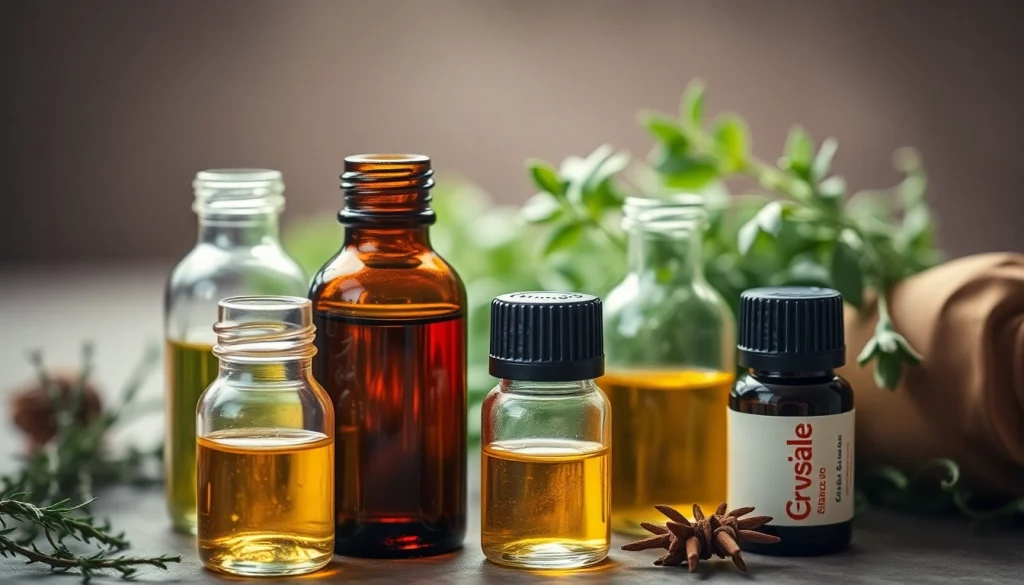Essential Oil Benefits: Harness Nature’s Aromatherapy for Wellness

Understanding Essential Oils: The Basics
Essential oils are concentrated extracts from plants that capture the plant’s aromatic essence. These oils have gained immense popularity in recent years for their various benefits, ranging from aromatherapy to skin care. Understanding essential oils is crucial for anyone interested in natural wellness practices. For those looking to explore more about these potent oils, essential oil products offer a diverse range of options that can cater to different needs.
What are Essential Oils?
Essential oils are volatile, aromatic compounds found in various parts of plants, such as leaves, flowers, bark, and roots. They are typically extracted through methods such as distillation or cold pressing. Essential oils are highly concentrated, meaning that a little goes a long way. These oils can vary widely in chemical composition and, therefore, their benefits and applications. While some are widely known for their calming properties, others are acclaimed for their invigorating effects.
Types of Essential Oils and Their Uses
There are numerous types of essential oils, each with its distinct scent and therapeutic properties. Here are a few popular varieties:
- Lavender: Known for its calming effects, lavender oil is often used in aromatherapy to relieve stress and improve sleep quality.
- Tea Tree: Renowned for its antimicrobial properties, tea tree oil is effective for skin ailments, such as acne and fungal infections.
- Peppermint: This oil is commonly used for digestive health and acts as an invigorating pick-me-up.
- Frankincense: Traditionally used for its spiritual significance, frankincense is also used to support skin health and reduce the appearance of scars.
How Essential Oils are Extracted
The extraction of essential oils can be carried out using several methods, primarily steam distillation, cold pressing, and solvent extraction. Steam distillation involves passing steam through plant material, vaporizing the volatile compounds. The steam is then cooled, condensing the vapor back into liquid form, separating the essential oil from the water. Cold pressing, on the other hand, is mainly used for citrus oils and involves mechanically pressing the plant to release its oils. Solvent extraction employs chemical solvents to dissolve the oil from the plant material, but this method is less common due to potential residues. Understanding these methods is essential for discerning the quality and purity of essential oils.
Health Benefits of Essential Oils
Essential oils have a myriad of health benefits, which are increasingly backed by scientific research. Their therapeutic properties can enhance emotional and physical well-being.
Top Essential Oils for Stress Relief
Stress relief is one of the most commonly sought benefits of essential oils. Oils like lavender, bergamot, and chamomile are renowned for their ability to promote relaxation and reduce anxiety. Studies have shown that lavender oil can lower heart rate and blood pressure, contributing to a sense of tranquility. Bergamot, often used in massage oils, can alleviate feelings of stress and depression, while chamomile is frequently utilized in teas for its calming effects.
Essential Oils and Immune Support
Essential oils can also bolster the immune system’s defenses. Oils such as eucalyptus, oregano, and lemon possess antimicrobial and antiviral properties. Eucalyptus oil, commonly used in steam inhalation to alleviate respiratory issues, has shown promise in enhancing immune function. Oregano oil is noted for its potent antimicrobial effects, making it a powerful ally against infections. Regular use of lemon essential oil can help detoxify the body and support overall health.
Using Essential Oils for Skin Care
The cosmetic benefits of essential oils have become widely recognized. Oils like tea tree, rosehip, and geranium are often integrated into skincare routines. Tea tree oil, famed for its antimicrobial properties, can effectively reduce acne outbreaks. Rosehip oil, rich in vitamins and fatty acids, is celebrated for its ability to hydrate and rejuvenate the skin. Furthermore, geranium oil is known to balance sebum production and enhance glowing skin, making it an excellent addition to homemade skincare products.
How to Use Essential Oils Effectively
Mastering the art of using essential oils requires understanding proper application methods, blending techniques, and safety precautions to ensure a positive experience.
Methods of Application
Essential oils can be used in various ways, including diffusion, topical application, and ingestion. Diffusing oils involves dispersing their aroma in the air, promoting relaxation and enhancing mood. Topical application can target specific areas for localized relief, much like how one would use a balm or lotion. For ingestion, it’s vital to ensure that the essential oil is food-grade and carefully follow dilution guidelines.
Best Practices for Blending Essential Oils
Creating unique blends of essential oils can enhance their therapeutic effects. When blending oils, it’s essential to consider their scent profiles and therapeutic properties. A good rule of thumb is to use a base note (like cedarwood), a middle note (like lavender), and a top note (like lemon) to create a balanced combination. Additionally, understanding individual oil properties ensures that blends enhance desired effects, whether for relaxation, stimulation, or healing.
Safe Usage Guidelines for Beginners
For beginners, it’s crucial to prioritize safety. Essential oils should always be diluted before topical application to avoid skin irritation; a typical dilution ratio is 2-3 drops of essential oil per tablespoon of carrier oil, such as coconut or jojoba oil. Performing a patch test prior to widespread application can help ascertain any sensitivity or allergic reaction. Understanding contra-indications—where essential oils may not be appropriate, such as certain medical conditions or during pregnancy—is equally vital.
Essential Oils in Everyday Life
Integrating essential oils into daily living can enhance quality of life through their various applications beyond traditional aromatherapy.
Integrating Essential Oils into Cleaning Regimens
Many household cleaning products harbor harmful chemicals that can impact health. Essential oils provide a natural alternative. Oils like lemon, tea tree, and eucalyptus not only displace odors but also possess antimicrobial properties, making them effective cleaning agents. A simple all-purpose cleaner can be made by mixing vinegar, water, and a few drops of essential oil, ensuring a fresher and safer home environment.
Using Essential Oils for Livelihood and Sleep
Essential oils can play a significant role in improving sleep quality. Oils such as lavender and chamomile can be added to pillow sprays or diffused in the bedroom before sleep. Additionally, applying a diluted solution to the temples and wrists can help signal relaxation to the body. Using essential oils at work—such as peppermint for an energy boost—can also enhance concentration and productivity.
Creating a Calm Environment with Essential Oils
Creating a calm environment is essential for mental well-being. Diffusing calming oils throughout the home or during meditation can transform the atmosphere. Setting aside a dedicated space infused with pleasant aromas allows for a tranquil retreat from the everyday hustle.
Choosing Quality Essential Oils
Not all essential oils are created equal; understanding what to look for when purchasing is crucial for maximizing benefits.
What to Look for in Essential Oil Labels
When selecting essential oils, labels should indicate 100% pure essential oil, along with the scientific name of the plant and country of origin. Certifications such as organic or therapeutic grade can also signal higher quality. Avoid fragrances and synthetic additives, which diminish the effectiveness of oils.
Comparative Analysis of Brands
With numerous brands available, it’s essential to conduct a comparative analysis. Look for companies that provide third-party testing results, showing their oils’ purity and potency. Customer reviews and ratings can also offer insight into the effectiveness and reliability of a brand’s essential oils.
DIY Essential Oil Recipes for Home Use
Creating your own essential oil blends and dispensed products can be empowering and fun. Simple recipes include homemade room sprays, bath oils, and skincare products. For example, a relaxing bath oil can be made by adding 5-10 drops of lavender oil to 1 cup of carrier oil, providing a soothing experience for winding down after a long day.







